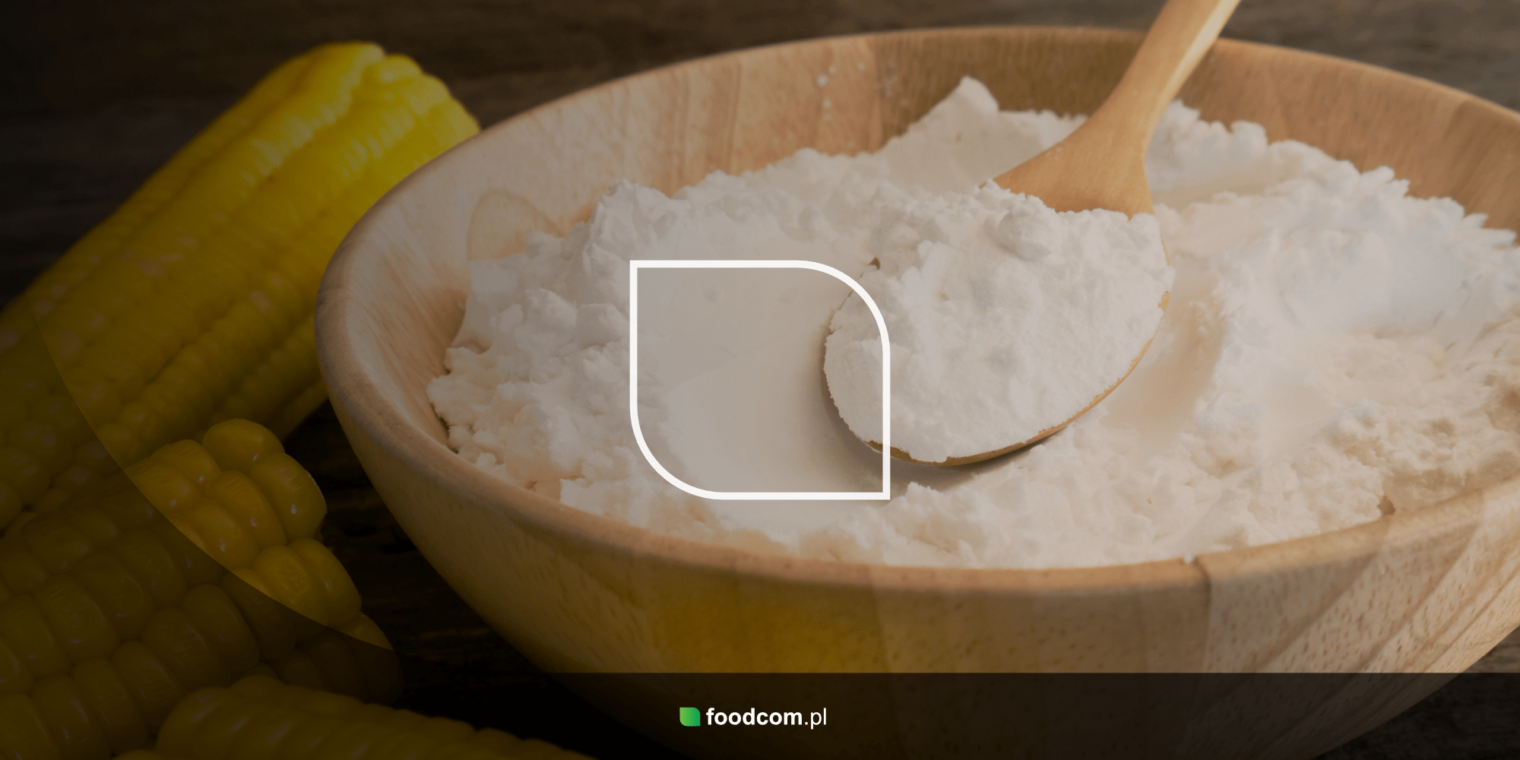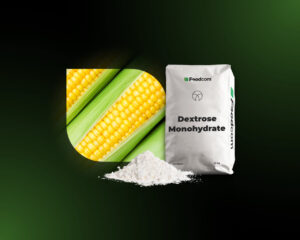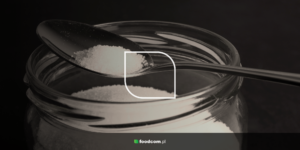Summary
Table of contents
- Dextrose, also known as D-glucose, is a simple sugar obtained by hydrolysis of plant starch.
- It has a mild taste and is soluble in water.
- Dextrose Monohydrate is used as a sweetener, energy source, bulking agent and corn syrup ingredient.
- It is used in the food, feed, cosmetic and sports nutrition industries.
Sugar is a general term for soluble carbohydrates with a sweet taste, many of which are used in foods. There is a wide range of sugars on the market, generally divided into natural and artificial. One of the most popular sugars is Dextrose, also known as D-glucose. Many manufacturers highly value its properties.
Read our comprehensive article on Dextrose Monohydrate to learn about its properties and how it can be used in industry.
The term Dextrose is another name for glucose, D-glucose, grape sugar, blood sugar, and corn sugar, depending on where it comes from. Usually, this ingredient is produced commercially by enzymatic hydrolysis of starch from plants such as corn, rice, potatoes, or wheat. Dextrose is a simple sugar, a monosaccharide that belongs to the carbohydrate group. Carbohydrates are important for providing energy and fulfilling nutritional and anabolic functions. Therefore, they are a significant component of human and animal nutrition. In plants, they are stored as starch and amylopectin, while in animals and humans they are stored as glycogen.
It can be processed into glucose syrup, which is much less sweet than normal sugar. It occurs naturally in many foods, especially fruits such as grapes, fruit juices and honey.
Dextrose occurs in the form of small crystals that crystallize as monohydrates. It is easily soluble in water and has a sweet taste, although not as strong as Saccharose.
In industry, it is used as a sweetener, energy source and bulking agent.
Maltodextrin, like Dextrose, is a carbohydrate preparation in powder form. Both products are a popular choice for physically active people, who consume them in shakes and supplements to aid in recovery and muscle building. Dextrose is a simple sugar that the body can use for energy without breaking it down. Therefore, it provides it faster than Maltodextrin.
In food production, Dextrose is commonly used as a sweetener and as the main ingredient in corn syrup. In confectionery, Dextrose is found in jams, marmalades, jellies and ice cream. It improves viscosity, increases sweetness and serves as a flavor enhancer. Dextrose has weaker sweetening power than other sugars, such as sucrose, but has a higher water solubility coefficient. Because of its role in the Maillard reaction in the preparation of rolls, bread and pastries, it is also used in the baking industry.
Dextrose is administered as a drug orally or by injection. It is used in the process of ‘total parenteral nutrition’, which provides the necessary calories from carbohydrates for recovery. It is also used in the preparation of medicinal tablets and gels. It also imparts a sweet taste to medications.
In the feed industry, it is the main source of carbohydrates for livestock, but also serves as a sweetener, pigment, and flavor enhancer in various pet foods and specialty feeds.
Athletes consume Dextrose after exercise to quickly restore lost energy, as it serves as fuel for the body. It also helps build muscle mass, supports the function of internal organs, including the brain, and maintains body temperature. Many sports nutrition manufacturers add Dextrose to their products, i.e. shakes and powdered drinks, for example.
Of course, the cosmetics industry also makes extensive use of the properties of Dextrose. It gives cosmetics a pleasant sweet taste, but it is also a humectant.
As mentioned above, Dextrose is used in foods mainly because of its taste as a sweetener. It is found in a wide variety of foods, including soft drinks, juices, candy, jellies, ice cream and baked goods.
Dextrose can also be used as a natural preservative. It extends shelf life, for example in fruit jams.
Dextrose also affects the texture of products, more specifically their viscosity and creaminess. For this purpose, it is added to ice cream, for example.
It is vital to consume only the recommended amount of sugar because too much can cause problems with the functioning of the body. It can also contribute to excessive fat production and cardiovascular disease. Its main property is to raise blood sugar levels quickly. This is widely used in medicine, especially for hypoglycemia. Dextrose is a safe substance when used in the correct dosage.
If you want to buy Dextrose, visit our product page to learn more about packaging and prices. Dextrose is offered as Dextrose Monohydrate, but Foodcom S.A. also supplies glucose syrup. There are many suppliers of Dextrose Monohydrate, but if you choose Foodcom S.A., you can be sure that you will receive a quality product without delivery delays or problems.
Our excellent sales team helps our vendors to handle contracts and business transactions smoothly and efficiently to provide the best quality service to all our business partners. Our finance department is responsible for all matters related to the financial part of the transaction.
Together with our sales support, we at Foodcom S.A. always try to find a way to work with our customers on the best terms and meet their expectations. In doing so, we will do our best to find solutions to any problems that may arise on the way to mutually beneficial cooperation.
Read our comprehensive article on Dextrose Monohydrate to learn about its properties and how it can be used in industry.
What is Dextrose?
The term Dextrose is another name for glucose, D-glucose, grape sugar, blood sugar, and corn sugar, depending on where it comes from. Usually, this ingredient is produced commercially by enzymatic hydrolysis of starch from plants such as corn, rice, potatoes, or wheat. Dextrose is a simple sugar, a monosaccharide that belongs to the carbohydrate group. Carbohydrates are important for providing energy and fulfilling nutritional and anabolic functions. Therefore, they are a significant component of human and animal nutrition. In plants, they are stored as starch and amylopectin, while in animals and humans they are stored as glycogen.
It can be processed into glucose syrup, which is much less sweet than normal sugar. It occurs naturally in many foods, especially fruits such as grapes, fruit juices and honey.
Properties of Dextrose
Dextrose occurs in the form of small crystals that crystallize as monohydrates. It is easily soluble in water and has a sweet taste, although not as strong as Saccharose.
In industry, it is used as a sweetener, energy source and bulking agent.
Maltodextrin vs. Dextrose
Maltodextrin, like Dextrose, is a carbohydrate preparation in powder form. Both products are a popular choice for physically active people, who consume them in shakes and supplements to aid in recovery and muscle building. Dextrose is a simple sugar that the body can use for energy without breaking it down. Therefore, it provides it faster than Maltodextrin.
What is Dextrose used for?
In food production, Dextrose is commonly used as a sweetener and as the main ingredient in corn syrup. In confectionery, Dextrose is found in jams, marmalades, jellies and ice cream. It improves viscosity, increases sweetness and serves as a flavor enhancer. Dextrose has weaker sweetening power than other sugars, such as sucrose, but has a higher water solubility coefficient. Because of its role in the Maillard reaction in the preparation of rolls, bread and pastries, it is also used in the baking industry.
Dextrose is administered as a drug orally or by injection. It is used in the process of ‘total parenteral nutrition’, which provides the necessary calories from carbohydrates for recovery. It is also used in the preparation of medicinal tablets and gels. It also imparts a sweet taste to medications.
In the feed industry, it is the main source of carbohydrates for livestock, but also serves as a sweetener, pigment, and flavor enhancer in various pet foods and specialty feeds.
Athletes consume Dextrose after exercise to quickly restore lost energy, as it serves as fuel for the body. It also helps build muscle mass, supports the function of internal organs, including the brain, and maintains body temperature. Many sports nutrition manufacturers add Dextrose to their products, i.e. shakes and powdered drinks, for example.
Of course, the cosmetics industry also makes extensive use of the properties of Dextrose. It gives cosmetics a pleasant sweet taste, but it is also a humectant.
Dextrose in food
As mentioned above, Dextrose is used in foods mainly because of its taste as a sweetener. It is found in a wide variety of foods, including soft drinks, juices, candy, jellies, ice cream and baked goods.
Dextrose can also be used as a natural preservative. It extends shelf life, for example in fruit jams.
Dextrose also affects the texture of products, more specifically their viscosity and creaminess. For this purpose, it is added to ice cream, for example.
Is Dextrose harmful?
It is vital to consume only the recommended amount of sugar because too much can cause problems with the functioning of the body. It can also contribute to excessive fat production and cardiovascular disease. Its main property is to raise blood sugar levels quickly. This is widely used in medicine, especially for hypoglycemia. Dextrose is a safe substance when used in the correct dosage.
Why Foodcom?
If you want to buy Dextrose, visit our product page to learn more about packaging and prices. Dextrose is offered as Dextrose Monohydrate, but Foodcom S.A. also supplies glucose syrup. There are many suppliers of Dextrose Monohydrate, but if you choose Foodcom S.A., you can be sure that you will receive a quality product without delivery delays or problems.
Our excellent sales team helps our vendors to handle contracts and business transactions smoothly and efficiently to provide the best quality service to all our business partners. Our finance department is responsible for all matters related to the financial part of the transaction.
Together with our sales support, we at Foodcom S.A. always try to find a way to work with our customers on the best terms and meet their expectations. In doing so, we will do our best to find solutions to any problems that may arise on the way to mutually beneficial cooperation.








